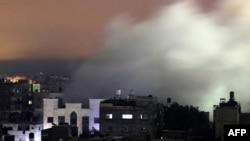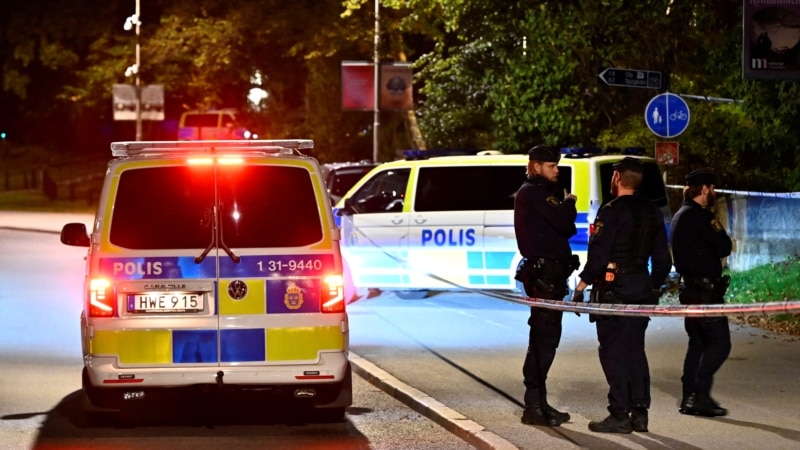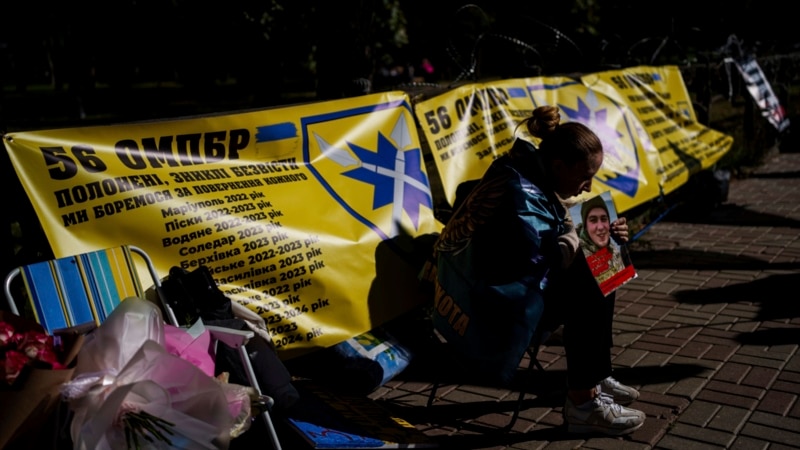The Biden administration has asked Congress to approve the sale of 45,000 shells for Israel’s Merkava tanks in the offensive against Hamas in Gaza, according to a current U.S. official and a former U.S. official.
Washington’s request has added to growing concerns about the supply of U.S. weapons in a war that has killed thousands of civilians in the Palestinian enclave since Hamas’ terror attack on Israel two months ago.
The potential sale is worth more than $500 million and it is under informal review by the Senate Foreign Relations and House Foreign Affairs committees, and it is not part of President Joe Biden’s $110.5 billion supplemental package request that lumps funding for Ukraine and Israel together.
A U.S. official, speaking on condition of anonymity, and former State Department spokesperson Josh Paul told the Reuters news agency that the U.S. State Department was pushing the congressional committees to quickly sign off on the transaction, despite objections from rights advocates about the use of U.S.-made weapons in the conflict.
The administration is also weighing using Arms Export Control Act emergency authorities to allow a portion of the ammunition, 13,000 of the 45,000 shells, to bypass the committee and review period, the U.S. official said, although a final decision was yet to be made.
The United States vetoed Friday a U.N. Security Council measure calling for an immediate humanitarian cease-fire in the war between Israel and the Palestinian militant group Hamas, diplomatically isolating Washington as it shields its ally.
The United States’ reasoning against a cease-fire is it would allow for Hamas, a U.S.-designated terror group in Gaza, to regroup. Washington instead supports pauses in fighting to protect civilians and allow the release of hostages taken by the militants during the October 7 terror attack on Israel.
Earlier Friday, Israel said it had discovered a new tunnel, weapons and Hamas facilities under Gaza — evidence, it said, that Hamas carries out military operations through an extensive network running underneath civilian infrastructure.
The military did not provide video or photo evidence of the kilometer-long tunnel extending from the campus of Al-Azhar University in Gaza to a nearby school, but it released photos of weapons soldiers allegedly found at the university, including explosives and rocket parts.
The military said it also found a Hamas control room with cameras, phones, walkie-talkies and weapons near a hospital in northern Gaza, as well as an additional tunnel entrance. A photo released by the military showed an opening to an underground passageway with a ladder stretching downward.
Israel said such discoveries show that Hamas is entrenched in civilian areas — a claim central to its justification for intensifying its attacks on the enclave and calling for more mass evacuations on civilian areas there.
U.N. Secretary-General Antonio Guterres said Friday that no place within Gaza was safe, hours before the Security Council voted on the demand for a humanitarian cease-fire in Gaza.
“The people of Gaza are looking into the abyss,” Guterres told the 15-nation council. “The international community must do everything possible to end their ordeal.”
Many displaced Palestinians in Gaza crammed into Rafah on the southern border with Egypt, where Israeli leaflets urged Palestinians to flee, saying they would be safe. But the Hamas-controlled health ministry reported at least 37 deaths there in overnight Israeli air attacks.
The Israeli military Thursday accused militants of firing rockets from areas near Rafah near the humanitarian zone.
Israel Defense Forces said Friday that over the past 24 hours the IDF had struck more than 450 targets in Gaza from land, sea and air — the most since the seven-day Israel-Hamas cease-fire collapsed last week and about double the daily figures typically reported since then.
More strikes were reported Friday in Khan Younis in the south, where Israeli forces were fighting house to house and “shaft to shaft,” a reference to tunnel shafts, Brigadier General Dan Goldfuss said in a video message from the area.
The death toll in Gaza since the war started two months ago was 17,487, with thousands more missing and presumed buried under rubble. Seventy percent of the victims were women and children, according to the health ministry.
Ninety-four Israeli soldiers have been killed fighting in Gaza since its ground invasion of the enclave began, according to the Israeli military.
With most Palestinians in Gaza now displaced and unable to access any aid, hospitals overrun and food running out, the main U.N. agency there said society was “on the verge of a full-blown collapse” and its ability to protect people there was “reducing fast.”
Fears of widening war
Approximately seven mortar rounds landed in the U.S. Embassy compound in Baghdad during an attack early Friday, a U.S. military official told Reuters, in what appeared to be the largest attack of its kind in recent memory.
U.S. forces in Iraq and Syria were also targeted with rockets and drones at least five more times Friday – three times at separate bases in Syria and twice at the Ain al-Asad Air Base west of Baghdad, a U.S. defense official said.
The attacks were the most recorded against U.S. forces in the region in a single day since mid-October, when Iran-aligned militias started targeting U.S. assets in Iraq and Syria over Washington’s backing of Israel in its war against Hamas in Gaza.
In the occupied West Bank, Israeli forces shot and killed six Palestinians Friday in a refugee camp, near the town of Tubas.
Palestinian President Mahmoud Abbas pushed Friday for an international peace conference to end the war in Gaza and to work out a lasting political solution that would lead to the establishment of a Palestinian state.
Also Friday, Israel’s military responded to an investigation about the death of a Reuters journalist in southern Lebanon on October 13.
Reuters reported that the military said in a statement, without naming journalist Issam Abdallah, that at the time of the incident, Lebanese Hezbollah forces attacked across the border and Israeli forces opened fire to prevent Hezbollah from entering Israel.
The IDF said in a statement, according to Reuters, that it was “aware of the claim that journalists who were in the area were killed” in what was an active combat zone, and the incident was under review.
Nearly 100 hostages held by Hamas were released before the weeklong cease-fire between Israel and Hamas collapsed on December 1. The militants are believed to still hold about 140 more hostages.
No negotiations were underway for another cessation in fighting.
Israel began its military campaign to end Hamas’ rule of Gaza after Hamas fighters crossed into southern Israel on October 7, killing about 1,200 people and taking the hostages.
VOA U.N. Correspondent Margaret Besheer contributed to this report. Some information came from The Associated Press, Agence France-Presse and Reuters.










